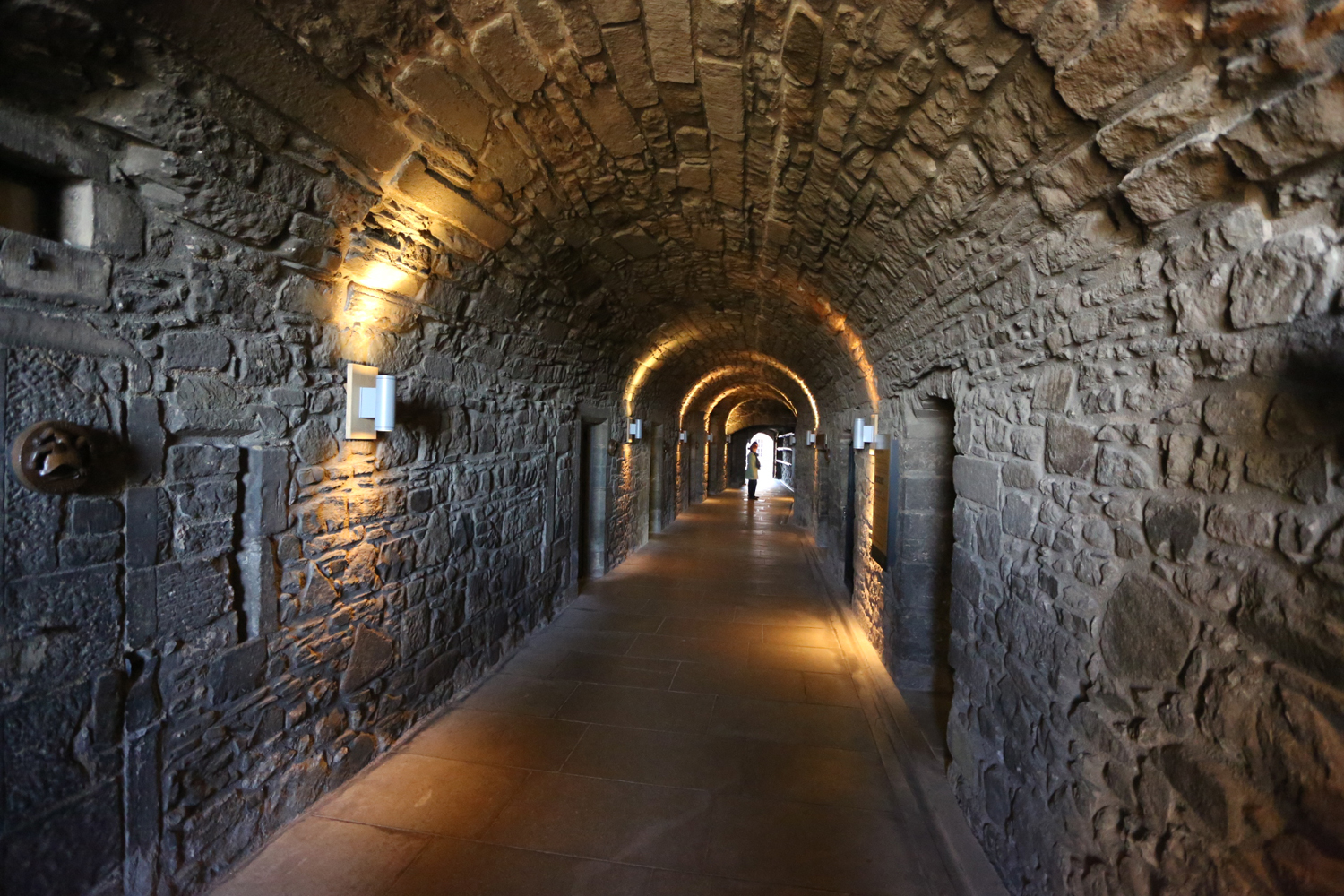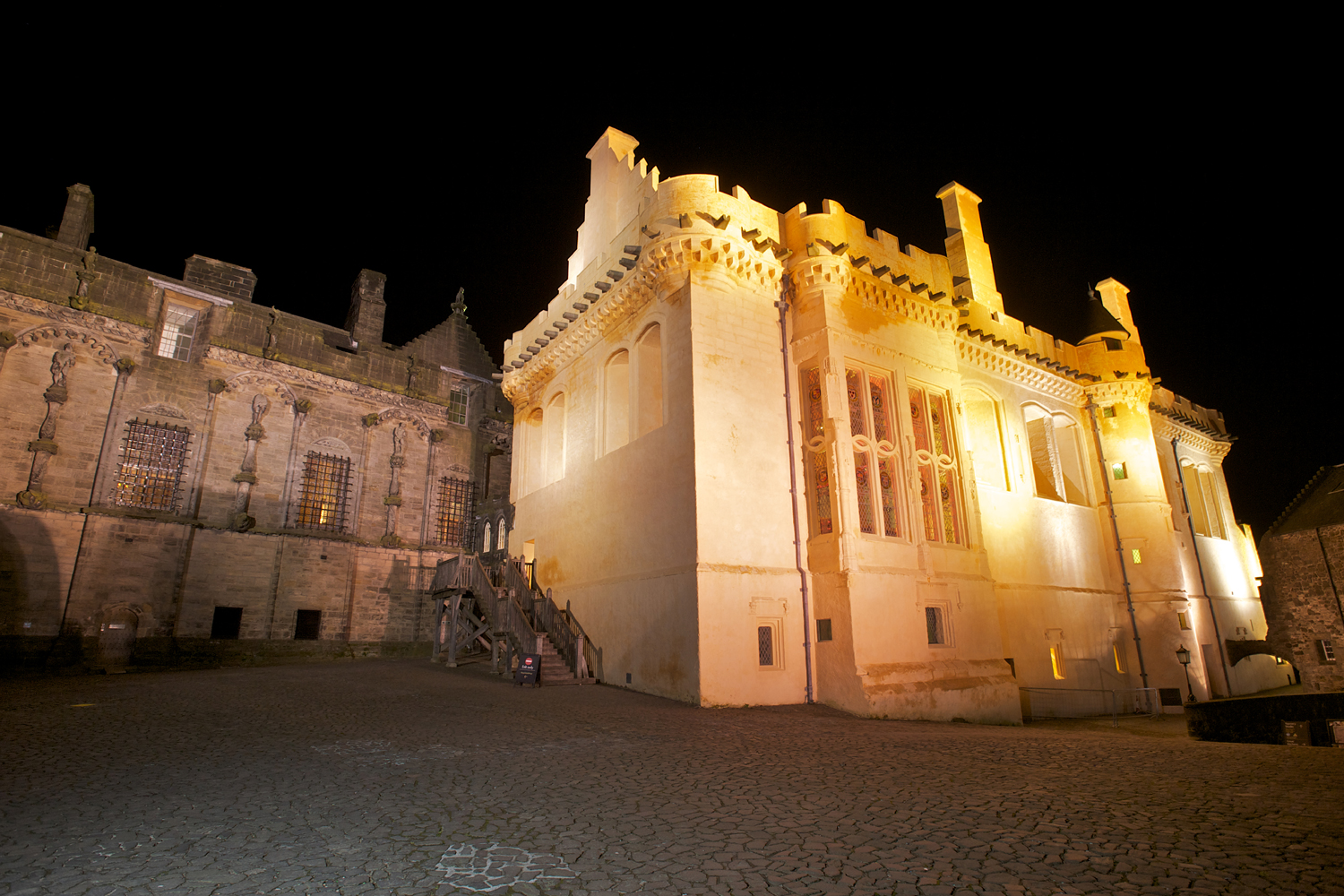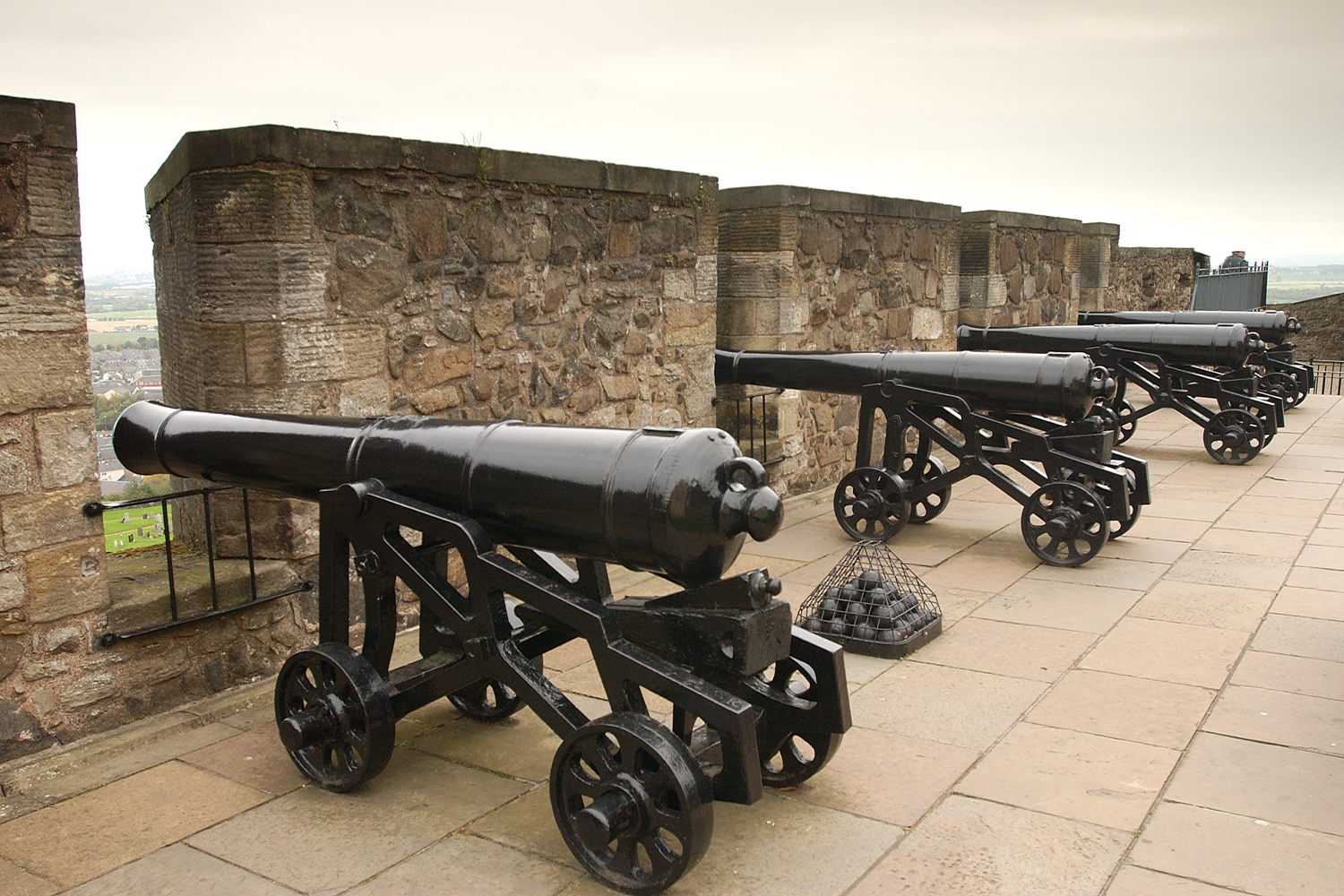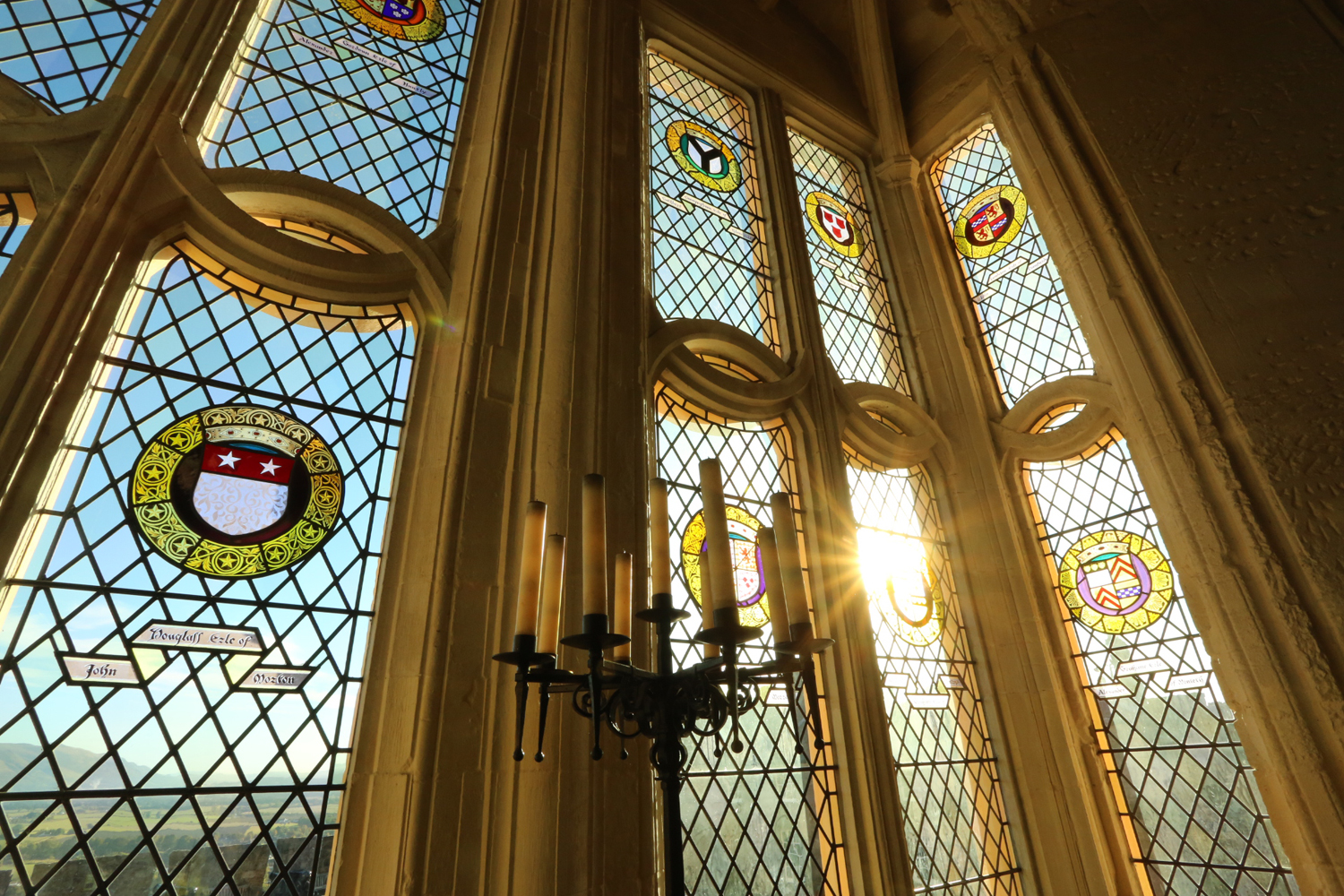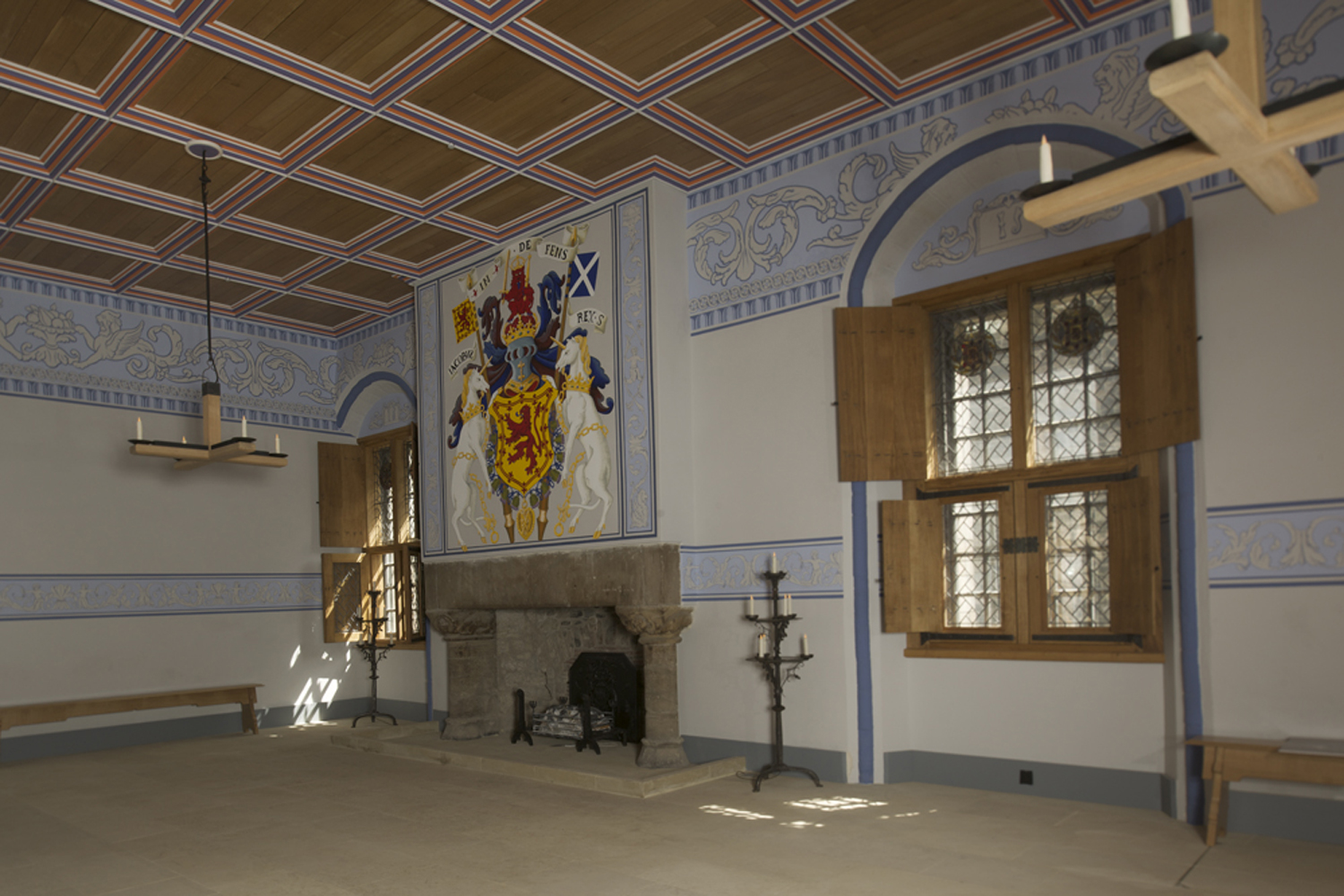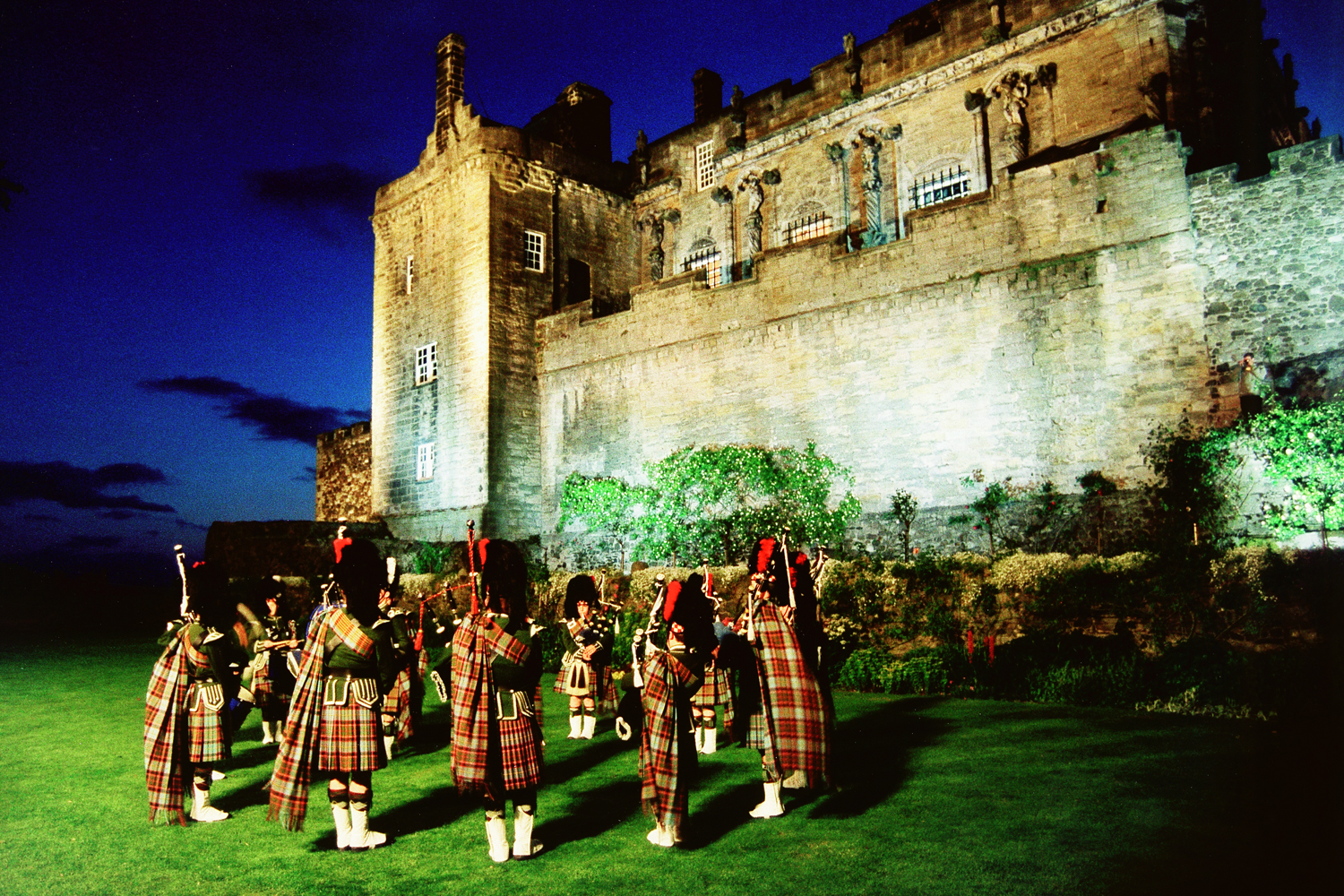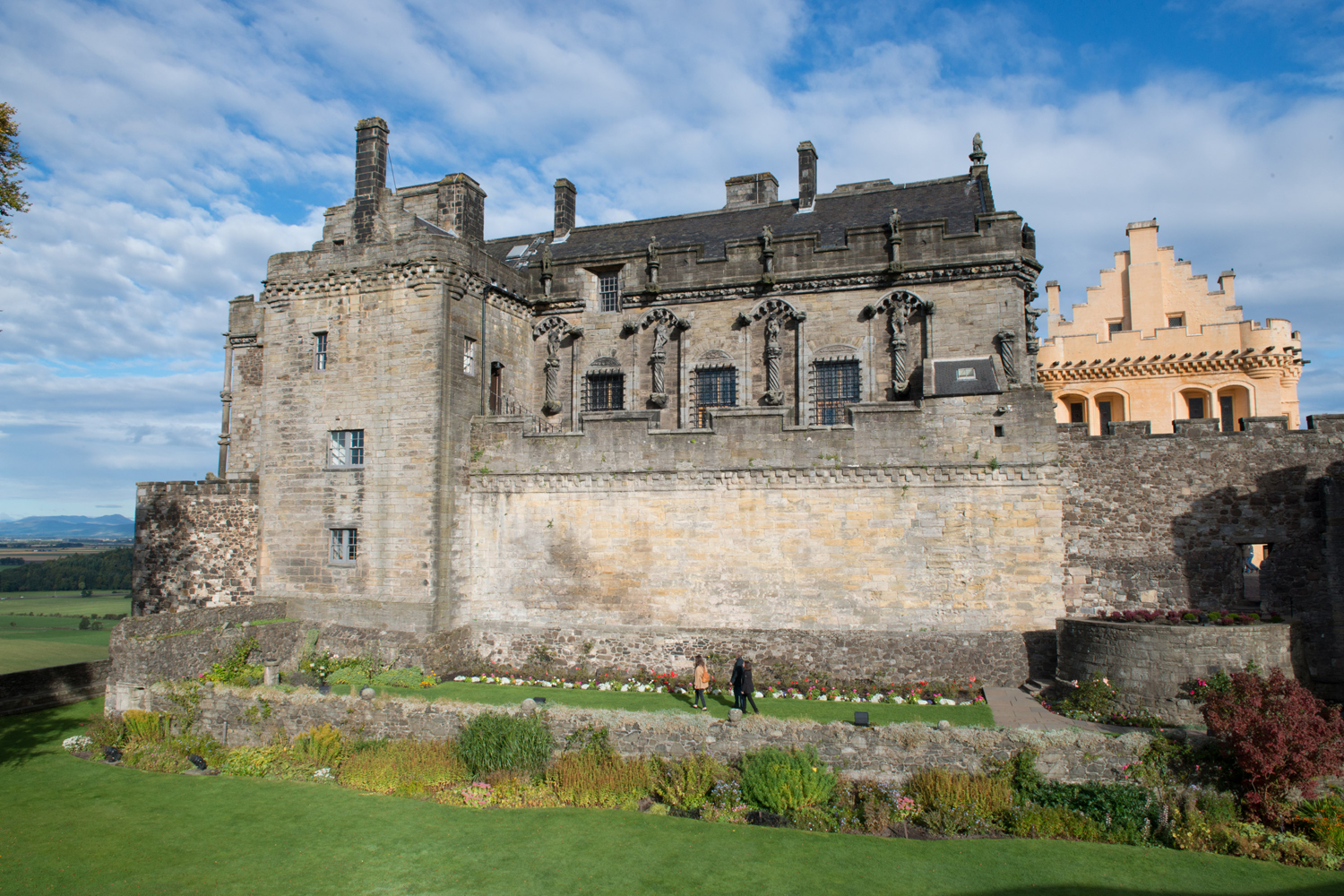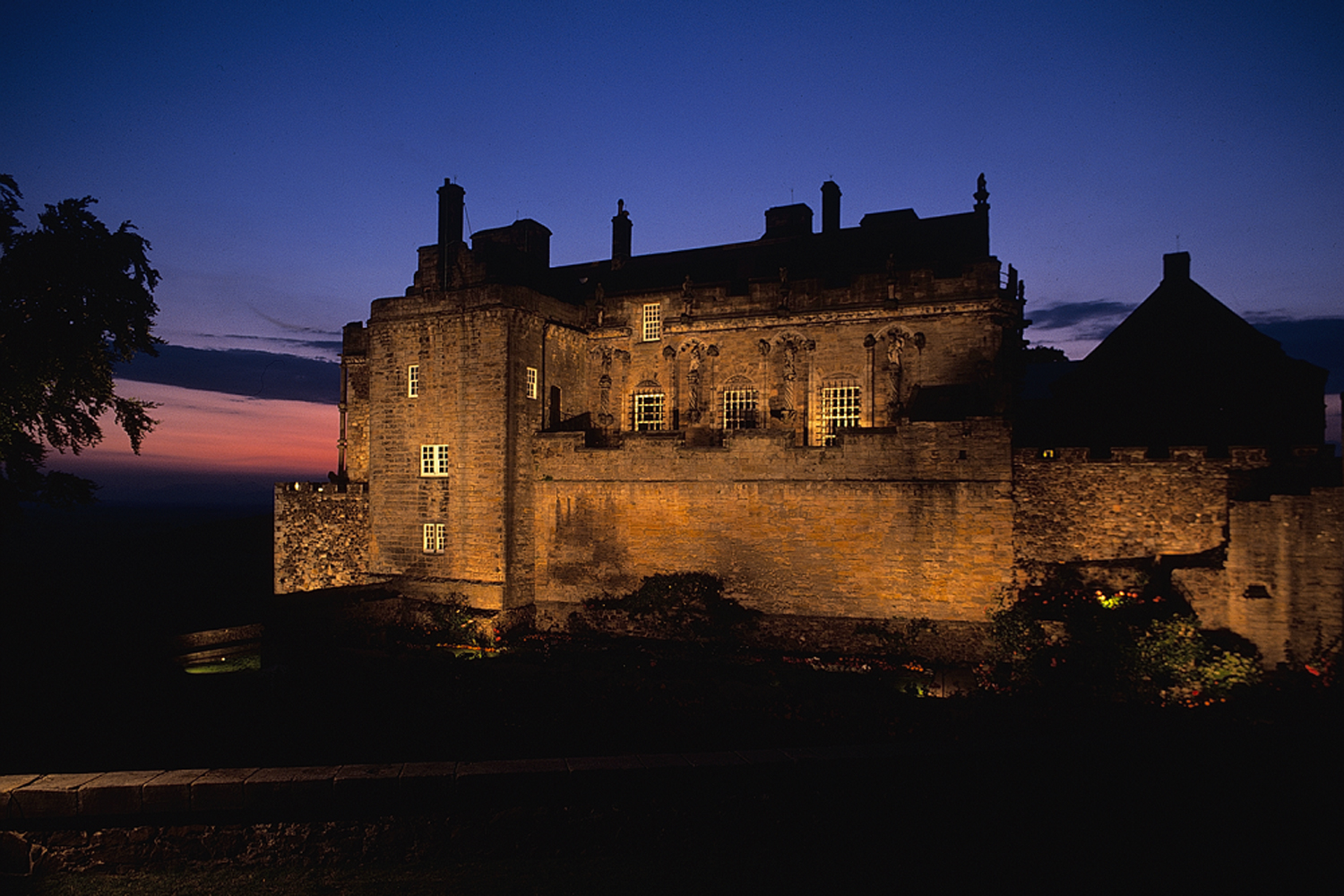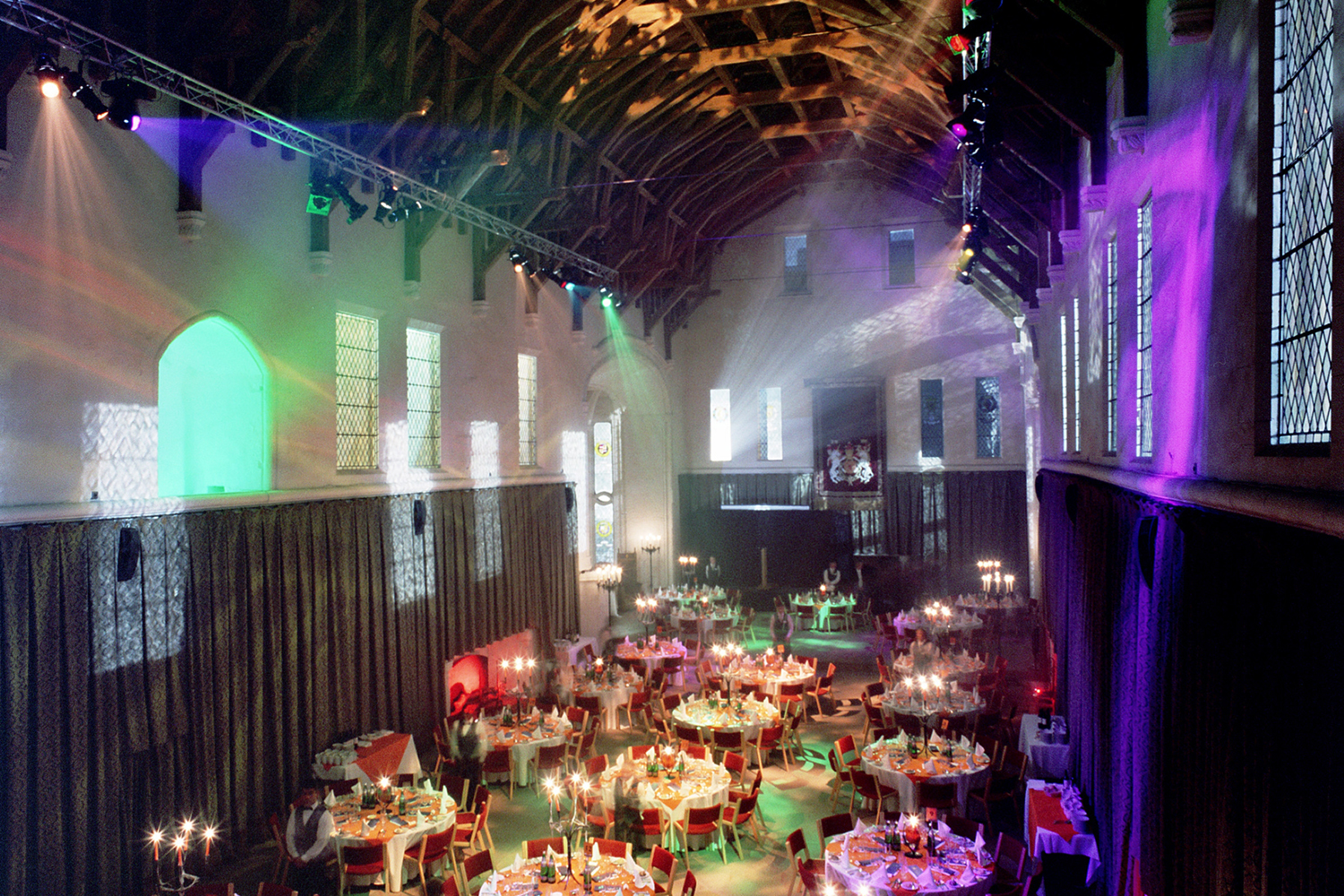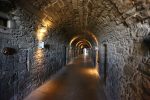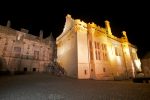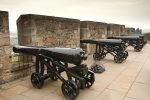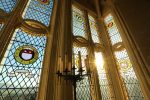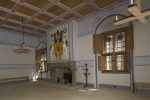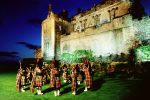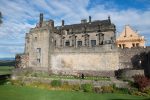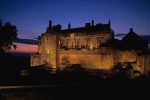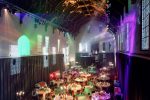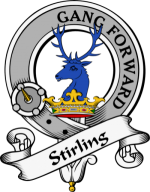
Stirling Castle occupies a strategically important point between the Scottish Lowlands and Highlands. For this reason, the castle has been described as the ‘brooch’ which joins the two halves of Scotland. Perched atop a rocky volcanic crag, the castle was able to control traffic along the River Forth below, the Stirling Bridge that crossed a low point in the river, and several roadways that passed nearby from all directions. The attractive defensive qualities of the site with its sheer cliffs on all but the southeast sides meant that it has been occupied since prehistoric times. During the Iron Age (1st-2nd century CE) there may well have been a hilltop fort on the site controlled by the Maetae or Votadini tribe.
The castle first comes to prominence during the reign of Alexander I (1107-24) when he dedicated a chapel there, he died at the castle in 1124 and was succeeded by his brother David. When William the Lion was captured by the English at Alnwick, he was compelled by Henry II to sign the Treaty of Falaise in 1174, which stated that the six most important castles in Scotland should be garrisoned by English soldiers. In 1189 the castle was returned to Scottish hands. Forty years after the Treaty was signed King William returned to Stirling where he died in December, 1214. It was during the Wars of Independence that Stirling really came to prominence. After his capture of Berwick in 1296, Edward I of England took Stirling Castle. In the following year the forces of William Wallace gathered at Stirling bridge and overthrew the English in the famous victory. However, the castle was once again in English hands a year later.
When the Scots again laid siege the Governor, John Simpson, appealed for support from Edward this was refused and on surrender of the castle Sir William Oliphant was entrusted with custody. In 1304 the castle was the last stronghold in the patriots hands and in April of that year Edward began his great siege. For three months the defenders held out until their imminent starvation, rather than the success of Edwards tactics, forced them to surrender. For ten years the castle was held by Edward’s forces until in 1313 Edward Bruce blockaded the fortress and forced Edward II to meet King Robert the Bruce’s forces at Bannockburn. Once again the Scottish forces inflicted a heavy defeat upon the English and the castle was surrendered to King Robert.
King Robert then set about destroying the fortifications of Stirling to prevent it being used as a English garrison. But after the defeat at Halidon Hill, Stirling was once again under English control. In 1337 the strengthened castle was besieged by Sir Andrew Moray, but was relieved by Edward III. Recapture by the Scots was not long delayed, for in 1342 the garrison was forced to yield. With the accession of the Stewart’s, Stirling once more became a Royal abode. In 1452 James II murdered William 8th Earl of Douglas at Stirling and threw his mutilated corpse out of a window. On the 9th of September 1543 the young Queen Mary was crowned in the chapel royal at Stirling. On her return to Scotland from France in 1561 Queen Mary asleep in her bed at Stirling was almost overcome by smoke when a candle set fire to the curtains in her room.
In 1566 Stirling was once again chosen as the refuge of a royal infant when the two month old Prince James (later James VI) was transported there. In 1651 General Monk who was in charge of Cromwell’s forces, laid siege to Stirling and the Governor was forced to yield after a mutiny by his garrison. After the restoration the castle reverted to the Earl of Mar and his heirs, but the privilege was withdrawn after George I suspected them of having Jacobite sympathies. Subsequent keeper-ship was held by the Crown until in 1923 King George V restored it in favor of the Earl of Mar and Kellie. For much more information about Stirling Castle please see Undiscovered Scotland: Guide to Stirling Castle NOTE Stirling Castle has always been held by the Crown or a keeper assigned by the Crown. The castle has never been the personal property of any family.
